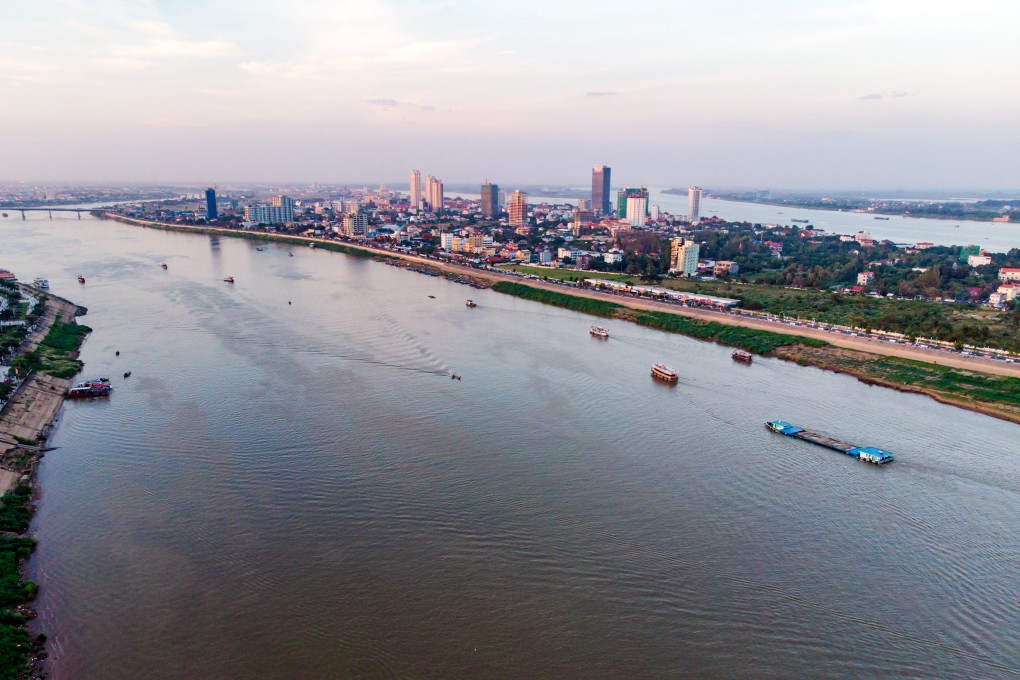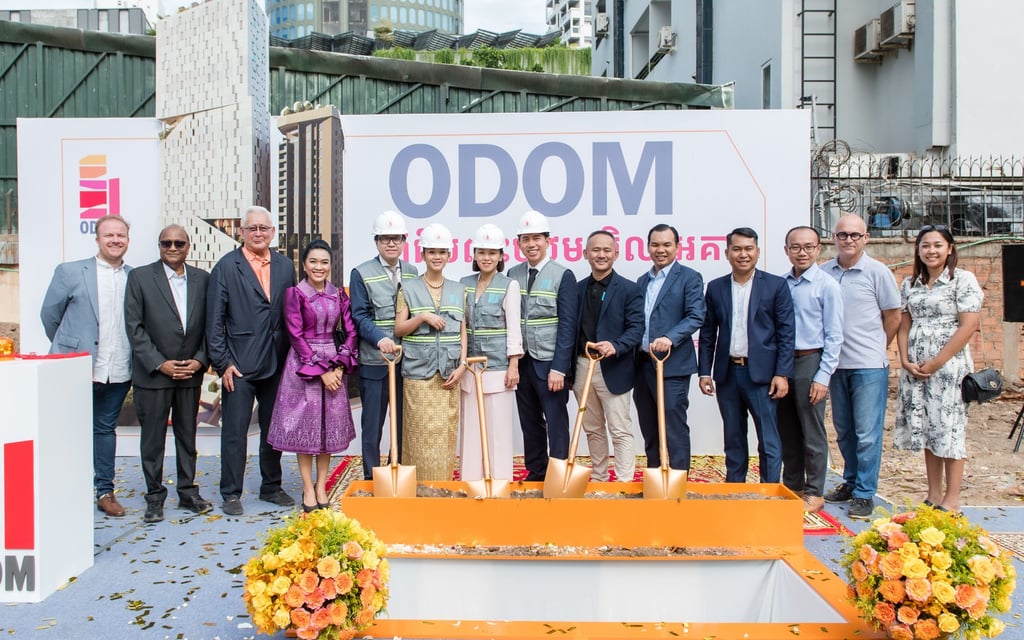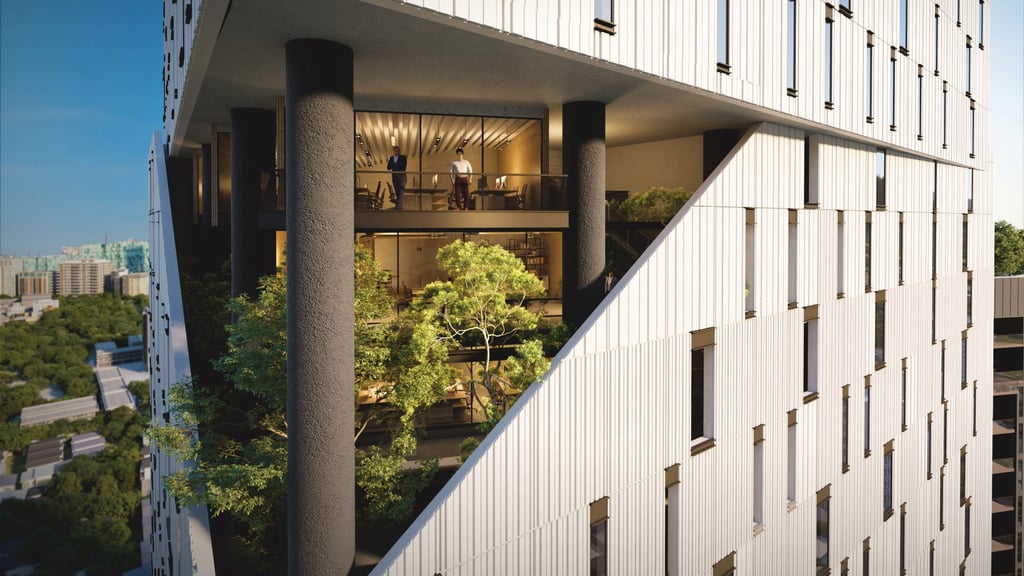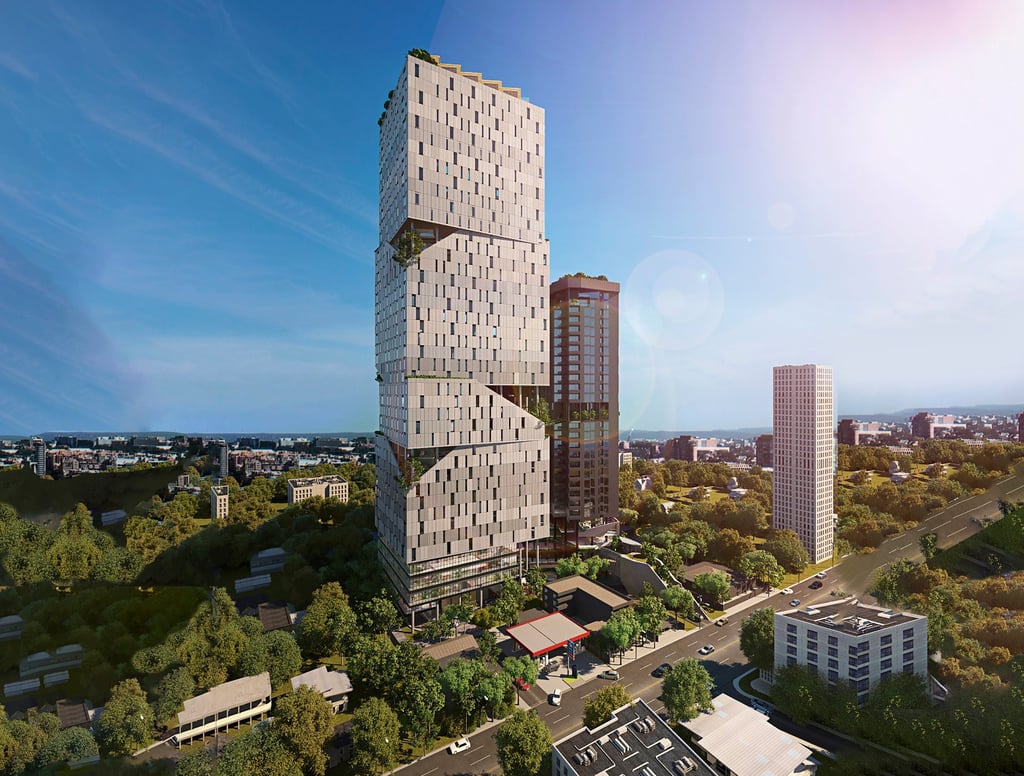A new mixed-use development in Phnom Penh aims to build communities in the sky
- Odom offers grade A offices, residences and retail space in one vertical community
- The development combines the latest smart design and environmentally friendly features with traditional elements of Khmer culture

[Sponsored article]
A recent groundbreaking ceremony for luxury development Odom marked the first stage of construction for what the developer, Urban Living Solutions, says will be a new landmark on the Phnom Penh skyline.
The developer says the city can look forward to a well-thought-out addition to public community spaces, and that the project is now starting to take shape. Rather than being a typical mixed-use development, it strives to create a community in a vertical structure by drawing on elements from traditional Khmer villages.
Centrally located on Phnom Penh’s Norodom Boulevard, the main north-south artery of the city, and sitting alongside prime businesses, embassies and schools, Odom combines a number of what the developer says are unique propositions for its customers.

Building communities
Designed by award-winning Singapore firm Kite Studio Architecture, the ambitious project consists of two towers: Odom Tower, a 45-storey building for commercial and office space, and Odom Living, a 22-storey residential complex. The two are connected by a sky bridge, as well as a five-storey retail podium, designed as a landscaped garden incorporating boutiques, restaurants and cafes.
The development places an emphasis on users’ well-being, incorporating “sky villages” throughout the office tower. These are communal spaces for people to step out of the office environment for natural light and some fresh air, or socialise with other residents without having to take a long ride in a lift.
“Communities are formed on a foundation of trust, and we believe the built environment can facilitate the introductions, conversations and daily interactions that connect people and help form deep relationships,” says Kim Leang Kean, managing director of Urban Living Solutions. “Close communities build great cities and a stronger nation – this is ambitious, but that is what we want to do.”
At Odom, this is achieved through shared amenities and outdoor green spaces connected by staircases. The idea to divide a communal meeting point into community nodes, placing them vertically in the towers, is designed to encourage movement through the building and create social hubs for residents and office workers to connect with each other.

While the design of Odom Tower takes its inspiration from the stacked stones of Angkorian temples, each sky village echoes Cambodia’s architecture and diverse geography, taking inspiration from elements of Khmer folklore such as floating villages, a forest village and rice fields.
The developer’s commitment to building communities does not end with residents: it also strives to help Phnom Penh’s communities. To ensure local people have access to green spaces, the pre-build site was transformed into a small park, called Odom Garden, for the enjoyment of the city’s residents.
The final development will provide 7,000 square metres (75,000 sq ft) of green space, the equivalent of 126 per cent of the area provided by Odom Garden, nearly 80 per cent of which will be open to the public. It will include play areas for children and a dog run.
Innovative design
Alongside meeting the needs of residents and the wider community, the development is also mindful of the importance of protecting the environment. Odom’s innovative and forward-thinking design aims to work with Cambodia’s climate, rather than against it.
In place of large-scale glazing, Odom Tower uses the designer’s own pre-cast concrete solution, which reduces both construction costs and environmental impact. By not using floor-to-ceiling windows, the designer has achieved a reduction in undesired solar heating, and by extension a decrease in energy consumption for air-conditioning. Instead, the building includes naturally ventilated and shaded outdoor areas.

Odom incorporates the latest energy-efficient technology and smart designs, including AI-powered lifts, leading to it achieving LEED pre-certified Gold status.
Odom Living will host what the developer describes as a world-class lifestyle, with apartments that incorporate larger living rooms and double balconies to give families more space in which to gather. Amenities include 24-hour security, a rooftop terrace, gym and pool, as well as communal green space.
An investment opportunity
The development, which is due to be completed in the fourth quarter of 2025, comes at a time when Cambodia’s economy is expanding rapidly.
The Asian Development Bank has forecast a rise in the nation’s GDP of 6.2 per cent in 2023, putting it among the top three countries with the highest economic growth in Southeast Asia.
Given this rapid expansion, Phnom Penh needs to increase its office space to cater to rising demand from the growing number of companies making the city their home. The capital currently has just over 600,000 square metres (6.5 million sq ft) of office space, but is expected to need about 887,000 square metres (9.5 million sq ft).

Odom includes 40,000 square metres (430,000 sq ft) of strata-title grade A office space, giving investors the opportunity to purchase office space to rent out. The office sector has a number of advantages over the residential, with commercial tenants tending to look for longer-term leases for spaces where they will often do the fitting out themselves.
As demand for office space grows, the investment is expected to generate both a regular annual income in the form of rental returns and capital appreciation when it is time to sell.